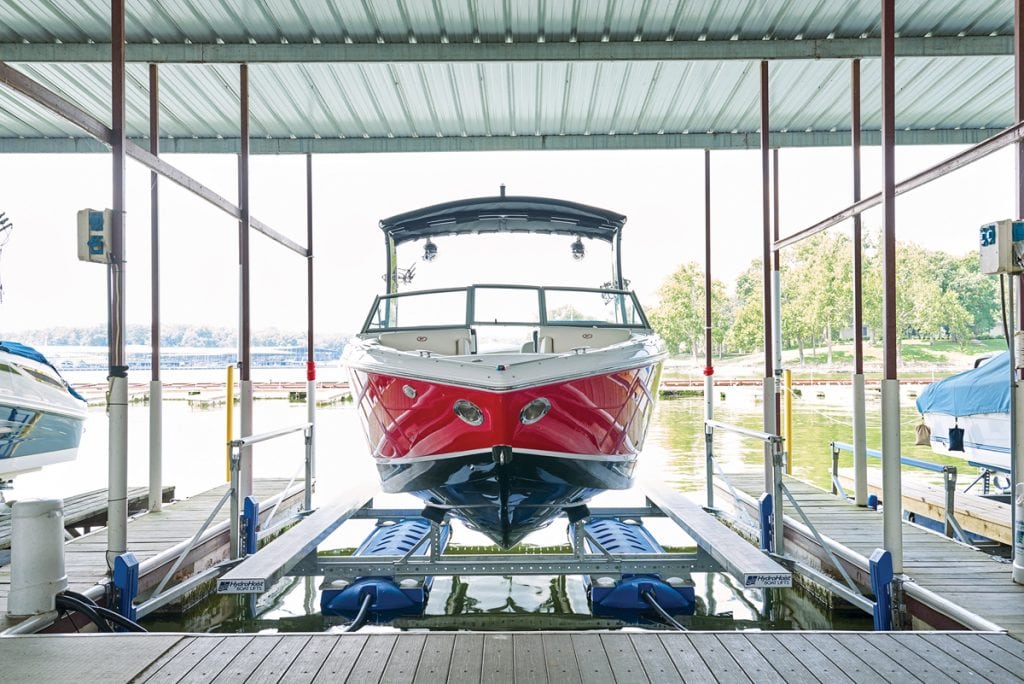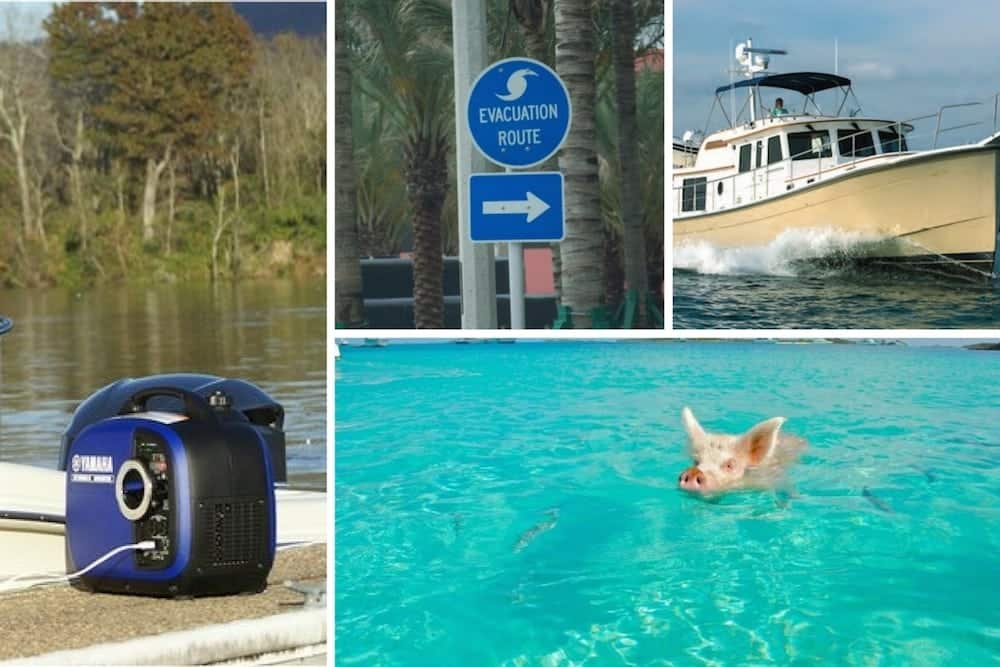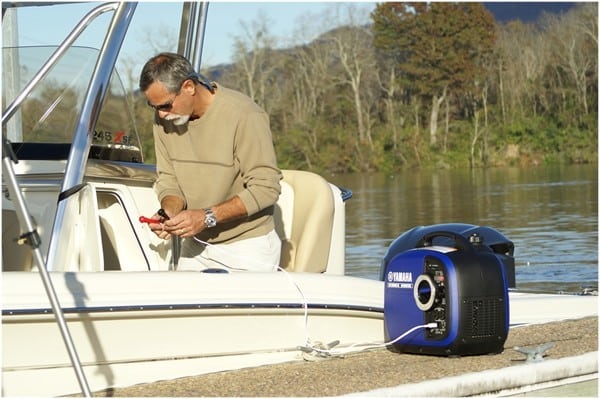Do your homework on boat lifts. Raise your boat and your standards.
Water can sometimes be the worst place for a boat. When not in use, a boat bobbing at the dock is under attack from the forces of nature. It’s not just marine growth that’s a problem but also the wind and waves that batter the hull.
Here’s where boat lifts help you rise above it all, a Zen state over the liquid chaos. Boat lifts allow for easier cleanup and better security, protecting your investment and making arrival and departure simple.
“The most common misconception about boat lifts is that they are too expensive,” says Cale Grauer, business development manager for HydroHoist, headquartered in Claremore, Oklahoma. “With the boat being lifted out of the harsh elements, your maintenance costs on your boat will be minimal to nothing. It prevents marine growth from accumulating on the outdrive or prop, and the hull can be easily sprayed off and wiped down.”
Another common misconception is that boat lifts are hard to operate. HydroHoist features simple push-button controls for its boat lifts that take the confusion out of raising and
lowering your vessel. JetDock, based in Cleveland, Ohio, offers an easy solution: Simply run the boat up on a series of floating cells linked together. Measurements are taken and then customers purchase the proper number of cells to fit the size of their boat.
“JetDock is designed to be as simple as possible for easy use and long life,” says Shaun Hagerty, a JetDock sales representative, who notes the system can handle boats up to 50 feet and 44,000 pounds. “The JetDock system is made of high-density grade polymer.
We use an air compressor for larger boats, and the only maintenance is to hose off the dock.” If a JetDock float cracks or falls apart, the design makes it very easy to replace a module and be back in business. The floats won’t pollute or contaminate the water and don’t degrade from UV or marine exposure.
Owners of larger cruising vessels such as a Marlow Explorer 62E that weighs 39 tons or more when loaded also have options. Hi-Tide Boat Lifts offers many styles for boats weighing from 1,500 pounds to 90 tons. The Fort Pierce Florida-based manufacturer was founded in 1979 and builds all its electronics in house. “Our dealers are marine contractors that are trained and certified through our manufacturing facility,” says Carlos Quinones, president of Hi-Tide. “They understand what and how things need to be done, and any non-certified installation will result in a voided warranty.”
Hi-Tide’s yacht lifts can hold larger boats—40,000 pounds to 90 tons—and are made of an all-aluminum structure using 6061-T6 marine-grade aluminum. However, retrofitting an
existing Hi-Tide lift is not possible if you get a bigger boat.
“The structural members change in size as capacity grows,” explains Quinones. “It’s not just a bigger motor, cable and gear box—that’s a big misconception. If bunking and hull
configuration changes, the answer is to call your factory-certified, trained dealer to set it up for you and avoid the liability of attempting it yourself.”
Adaptability to the environment where the lift will be installed and used is critical to success. For example, HydroHoist’s HarborHoist boat lift series can be used in situations ranging from fixed pier to single-finger docks to floating dock styles and in both fresh and saltwater environments. The polyethylene tanks are precision-designed and custom-molded.
“They are a seamless, one-piece design constructed of high-impact polyethylene,” Grauer says. “They are designed so that the walkways in the lowered position are able to stay buoyant and provide a continuous walkway for easy access to your boat in the raised and lowered position. This tank design allows the lift to simply be tied off to a standard dock cleat or piling, or it can use a conventional mooring system.”
Marinas and repair yards also have needs for lifts to service customers’ boats. “We have manufactured lifts with custom configurations that range up to 80,000 pounds of capacity for service platform lifts,” Grauer says. “We typically use these larger lifts for marinas and shipyards to do maintenance on houseboats or large boats’ outdrive and fiberglass hull repairs beneath the water level.”
The cost of installing a boat lift varies, depending on the dock and surrounding areas. Although manufacturers would not provide general pricing guidelines, our research shows that small lifts cost as little as $2,000, while larger lifts for yachts can cost $60,000 or more.
However, the cost may be well worth it if the lift saves you money, time and worry—and allows you to stay in that state of Zen.
Resources: boatlift.com; hi-tide.com; jetdock.com
By Doug Thompson, Southern Boating October 2017














